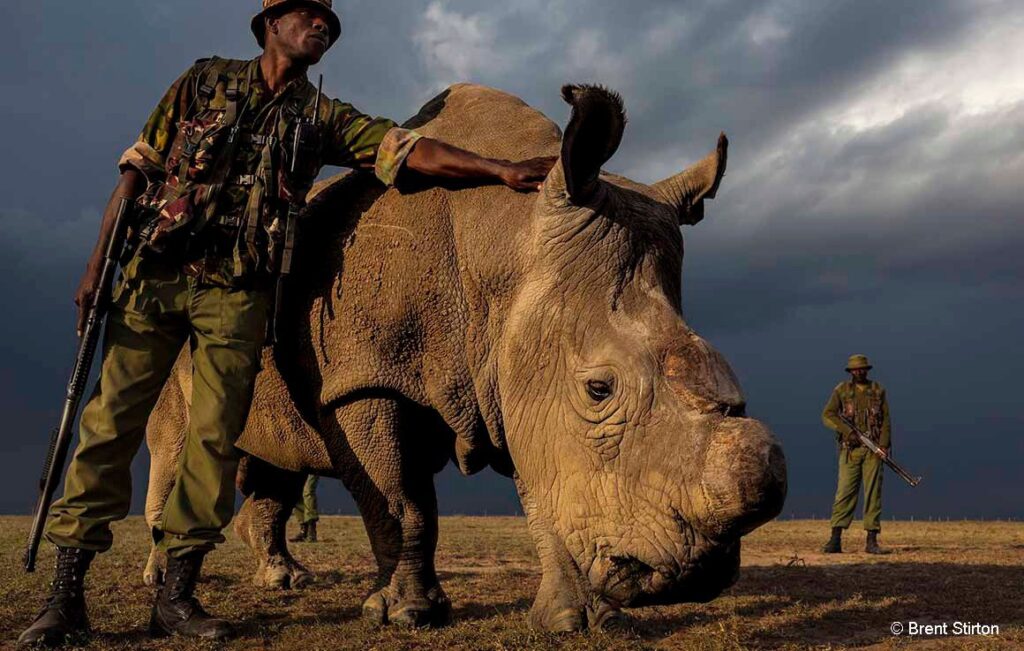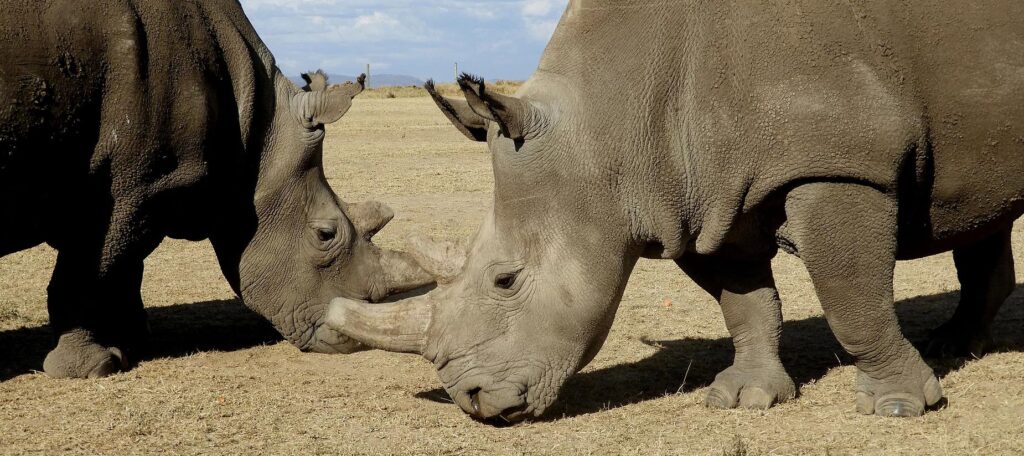Rembering Sudan: The Last Male Northern White Rhino
On March 19, 2018, Sudan the last male northern white rhino took his final breath. At 45 years old, he was ancient for a rhino. His death was heartbreaking but not unexpected. That morning, the sun struggled to rise over Mount Kenya’s peaks. The air felt heavy with sorrow. Men spoke in hushed Swahili tones. Sudan lay still, his thick legs folded beneath him. His massive head tilted, resembling a capsized ship. His worn-down horn carried the scars of time. Around him, zebras, elephants, giraffes, and lions continued their daily routines. Sudan, once a vital part of this ecosystem, could barely move. His harsh, labored breathing signaled the end.

The Conservation Crisis
Sudan’s death marked the tragic climax of a conservation crisis decades in the making. Despite every effort—scientific, legal, and political—his species reached the brink. His wrinkled gray skin looked like stone, his body failing for months. Deep sores covered his legs, and one infection worsened beyond healing. His caretakers knew the inevitable was near. They fought to ease his pain, stuffing bananas with medicine and applying medical clay to his wounds. On March 17, Sudan collapsed for the last time. His caretakers tried helping him stand, but his legs were too weak. The world watched as a species edged closer to extinction.
Sudan: A Global Icon
In his final years, Sudan became a global icon for conservation. Protected 24/7 by armed guards, he lived like an ex-president. Visitors traveled from around the world to see him. Weighing two tons, Sudan had the gentle nature of a golden retriever. He allowed people to touch him, to feed him snacks. He clamped down on carrots like tiny toothpicks. Many visitors broke down in tears. They knew they were witnessing history—the last of a kind slipping into oblivion. The weight of extinction felt unbearable.

Najin and Fatu: The Last Survivors
Though Sudan the last male northern white rhino is gone, his legacy lives on. He left behind two female descendants—his daughter Najin and granddaughter Fatu. As Sudan’s health declined, Najin and Fatu grazed nearby, unaware of what was coming. Scientists describe their situation as “functional extinction.” Without a viable male, the subspecies has no future. The northern white rhinos would vanish unless science found a solution.

Sudan’s Final Goodbye
As Sudan’s final moments approached, his caretakers surrounded him. They had dedicated their lives to protecting him. One of them, Joseph Wachira, leaned in to give him one last rub behind the ear. Sudan responded by resting his heavy head against him. Rain fell softly. A distant bird called out. The keepers wept. They had spent more time with Sudan than with their own families. Watching the last of a species die felt like witnessing humanity’s own decline. Yet, their work was not over.
Hope for the Future
Scientists moved quickly. They extracted Sudan’s last sperm sample, hoping to preserve the species through advanced reproductive technology. In his pen, they removed his skin in large sheets. His bones were boiled in preparation for a future museum display. One day, Sudan would stand among relics of lost species, like the dodo or the great auk. Future generations would look at his skeleton and struggle to imagine him alive. They would never truly understand his presence—the way he breathed, moved, and existed in the wild.
A Call for Conservation
Remembering Sudan reminds us of our duty to protect all species. His death is a warning. If we fail to act, more creatures will follow. Sudan’s memory must drive conservation efforts forward. The world lost its last male northern white rhino. We cannot let this happen again.
